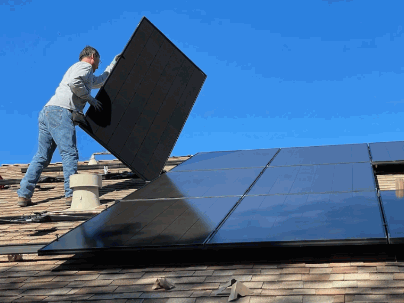Curious about solar panels and their benefits?
Installing solar panels on your roof can reduce electricity bills, increase property value, and help the environment.
We will cover the different types of solar panels available and how they are installed on a roof.
This article will provide information on the installation process, maintenance requirements, and how you can harness the power of the sun for your home.
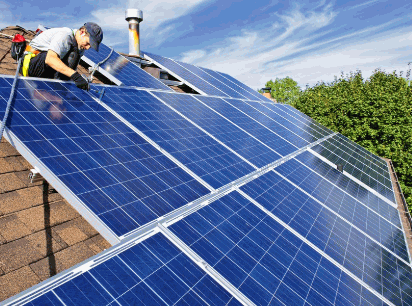
What Are Solar Panels?
Solar panels, also known as photovoltaic (PV) panels, are devices that convert sunlight into electrical energy, forming an essential component of a solar power system to address various energy needs.
There are primarily three main types of solar panels:
- Monocrystalline panels are known for their high efficiency and sleek design.
- Polycrystalline panels are more budget-friendly and have a lower efficiency rate.
- Thin-film panels are flexible and lightweight, making them suitable for specific applications.
These panels work by utilizing photovoltaic cells to capture sunlight and convert it into direct current (DC) electricity. This electricity is then passed through an inverter, which converts it into alternating current (AC) electricity, usable for powering various household appliances and devices.
Explore further: How Do Solar Panels Work
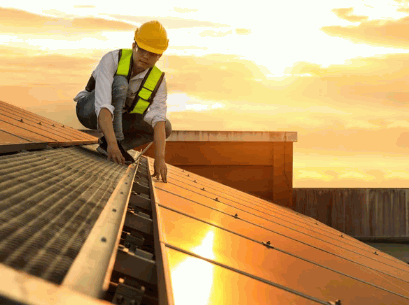
What Are The Benefits Of Installing Solar Panels On Roof?
Installing solar panels on your roof offers numerous benefits, including reducing electricity bills, promoting environmental sustainability, and increasing property value.
Reduces Electricity Bills
One of the primary benefits of installing solar panels is the significant reduction in electricity bills, as the energy generated from the solar power system can meet a substantial portion of your energy needs.
By leveraging the capabilities of the sun, solar panels can provide a clean and sustainable source of energy for your home or business. Over time, this renewable energy source can help you save thousands of dollars on electricity costs.
For example, imagine saving hundreds of dollars each year by generating your own electricity and reducing your dependency on the grid. Excess energy produced by your solar panels can be fed back into the grid, allowing you to earn credits or even money through net metering programs, further offsetting your electricity expenses.
Environmentally Friendly
Solar panels are an environmentally friendly option for generating energy, as they produce no greenhouse gas emissions during operation.
By harnessing the sun’s energy, solar panels play a crucial role in reducing carbon footprint and combatting climate change. The energy generated from solar panels is clean and sustainable, unlike traditional sources like coal or natural gas, which release harmful emissions into the atmosphere. The production of solar panels has a lower environmental impact compared to other forms of electricity generation.
Increases Property Value
Installing solar panels can increase property value, as potential buyers often seek homes with energy-efficient features and lower utility costs.
Several factors contribute to this rise in property value. Statistics show that homes with solar panels typically sell for a premium. A study by the Department of Energy found that for every 1 kilowatt of solar power installed, a home’s value increases by an average of $5,911. This adds up significantly for homes with larger solar panel systems.
- The growing awareness of environmental sustainability has made solar panels a desirable feature in real estate. More buyers are willing to pay extra for a property that aligns with their eco-friendly values.
- In regions where energy prices are higher, solar panels present a long-term cost-saving opportunity for homeowners. This energy cost reduction factor is attractive to potential buyers, further boosting the property’s appeal.
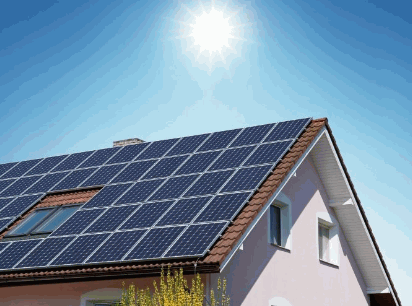
What Are The Types Of Solar Panels Available?
There are several types of solar panels available on the market, each with its unique characteristics, including monocrystalline panels, polycrystalline panels, and thin-film panels.
Monocrystalline Panels
Monocrystalline panels are known for their high efficiency and sleek appearance, making them a popular choice despite their higher cost.
Characterized by their uniform structure and high-purity silicon material, monocrystalline panels are extremely efficient in converting sunlight into electricity. Their sleek black color and rounded edges give them a modern and sophisticated look, often preferred for residential installations or visible commercial projects where aesthetics play a role. While they may come at a higher initial cost compared to other types of solar panels, the long-term energy savings they provide make them a worthwhile investment for many homeowners and businesses.
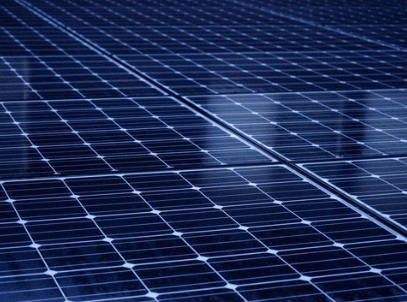
Polycrystalline Panels
Polycrystalline panels are a cost-effective option that offers a slightly lower efficiency compared to monocrystalline panels, while still providing reliable performance.
Although they may not be as efficient as monocrystalline panels, polycrystalline panels make up for it with their affordability, making solar energy more accessible to a wider range of people. These panels are typically constructed using silicon crystals that are less uniform in structure, hence the lower efficiency. Their lower production costs translate to a more budget-friendly option for consumers. Polycrystalline panels are commonly used in residential settings where space is not a limiting factor, and their performance still meets the requirements.
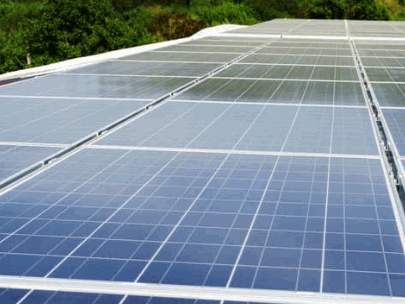
Thin-Film Panels
Thin-film panels are known for their flexibility and ease of installation, making them suitable for a variety of applications, especially where traditional panels might not fit.
Thanks to their lightweight design and ability to bend and conform to various surfaces, thin-film panels offer a versatile solution for unconventional installation scenarios. Whether it’s on a curved roof, an irregularly shaped structure, or integrated into building materials, these panels provide a seamless and aesthetically pleasing solar energy solution. Their scalability makes them ideal for both large-scale commercial projects and smaller residential installations, offering a cost-effective and efficient alternative to traditional rigid panels.

What Is The Process Of Installing Solar Panels On Roof?
Installing solar panels on a roof involves several crucial steps, starting with assessing the roof, obtaining necessary permits, mounting the panels, and making electrical connections, all in compliance with specific requirements.
Assessing The Roof
The first step in installing solar panels is assessing the roof, considering factors such as roof size, pitch, and the presence of any chimneys or dormers.
When evaluating the roof, its size is a crucial determinant as it dictates the number of panels that can be installed. A larger roof offers more space for panels, allowing for a greater solar energy output.
The pitch of the roof also plays a key role, as it affects how sunlight hits the panels, influencing their efficiency. Roofs with different pitches may require specific mounting solutions for optimal performance.
In addition, the presence of obstacles like chimneys and dormers can impact the installation process, requiring careful planning and customization to ensure seamless panel placement.
Obtaining Permits And Approvals
Obtaining the necessary permits and approvals is a crucial step in the installation process, as different jurisdictions have specific regulations governing solar panel installations.
One of the key aspects of this stage is conducting thorough research to understand the local laws and requirements related to solar installations. This may involve obtaining permits from the city or municipality, utility companies, homeowner associations, or even historic preservation boards, depending on the area. It’s essential to adhere to these regulations to ensure the project’s legality and safety.
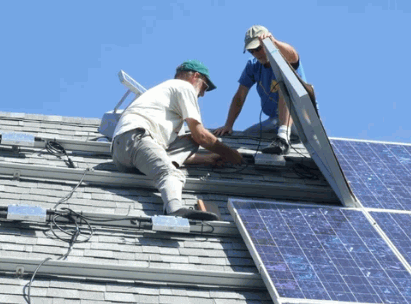
Mounting The Panels
Mounting the solar panels involves securely attaching them to the roof using appropriate materials and mounting systems to ensure stability and optimal performance.
For different types of roofs, such as flat or sloped, different mounting techniques may be required to securely attach the panels. It’s crucial to take into consideration factors like weather conditions and the load-bearing capacity of the roof when selecting the mounting materials.
The process also involves ensuring that the panels are placed in an optimal position to receive maximum sunlight. Once the panels are securely attached, regular maintenance checks should be conducted to ensure their long-term performance and efficiency.
Connecting The Panels To The Inverter
After mounting, the next step is connecting the solar panels to the inverter, which converts the direct current (DC) generated by the panels into usable alternating current (AC) energy.
The inverter plays a crucial role in this process, as it not only changes the type of current but also ensures that the energy flows efficiently throughout the system.
Proper wiring is essential to make sure the energy conversion occurs smoothly. Incorrect wiring can lead to inefficiencies, power loss, and potential safety hazards.
Ensuring the correct wiring setup is in place minimizes the risk of malfunctions and maximizes the performance of the solar energy system.
Connecting The Inverter To The Electrical Panel
Connecting the inverter to the electrical panel integrates the solar power system into the home’s electrical system, allowing the generated energy to meet household energy needs.
Professionally connecting the inverter is crucial as it ensures that the solar energy is seamlessly integrated without any safety risks or compatibility issues. A certified electrician will carefully wire the inverter to the electrical panel, following the specific guidelines provided by the manufacturer. This process involves precise connections to ensure optimal performance and prevent any electrical hazards. Professional installation guarantees that the inverter is correctly sized and configured to work efficiently with the home’s electrical setup, maximizing the benefits of the solar power system.
Final Inspection And Activation
The final step involves a thorough inspection of the installation to ensure all requirements are met, followed by the activation of the solar power system to start generating energy.
During the final inspection, a qualified technician typically conducts a comprehensive check of the entire solar power setup. They meticulously examine the solar panels, inverters, wiring, and mounting hardware to verify that everything is correctly installed and in optimal condition. The technician also checks the electrical connections for safety and efficiency. Any discrepancies or issues are noted and rectified before proceeding with the activation process.
Activation is a critical stage where the solar power system is turned on for the first time. This process involves syncing the system with the grid, configuring the settings, and ensuring that all components are functioning as intended. Once activated, the solar power system begins converting sunlight into electricity, marking the commencement of energy generation.
What Are The Maintenance Requirements For Solar Panels?
Proper maintenance of solar panels is essential to ensure their longevity and optimal performance, involving regular cleaning, performance monitoring, and timely repairs or replacements as needed.
Regular Cleaning
Regular cleaning of solar panels is crucial to maintain their efficiency, as dirt, dust, and debris can obstruct sunlight and reduce performance.
Experts recommend cleaning solar panels at least twice a year, but the frequency may vary based on the local climate conditions. For regions with heavy pollution or frequent dust storms, more frequent cleaning may be necessary to ensure optimal performance. When cleaning, always use gentle cleaning solutions, such as a mixture of mild soap and water, to avoid damaging the panels. Proper maintenance involves using soft brushes or sponges to scrub the surface gently and rinse with clean water to remove any residue.
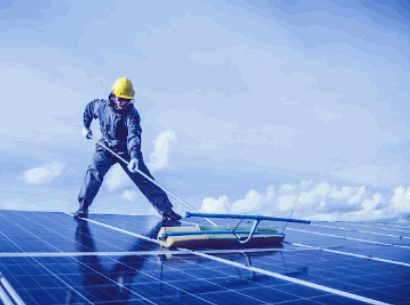
Monitoring Performance
Monitoring the performance of your solar power system helps identify any issues early and ensures that the system is operating efficiently and meeting your energy needs.
One of the key tools for monitoring solar panel performance is a solar inverter, which converts the direct current (DC) produced by the panels into alternating current (AC) that can be used in your home. In addition, utilizing monitoring software allows you to track real-time data on energy production, consumption, and system efficiency. Regularly checking metrics such as energy output, voltage, and current levels can help you identify any potential issues and optimize the performance of your system. By analyzing this data, you can make informed decisions on maintenance needs and ensure that your solar panels continue to generate clean, sustainable energy for years to come.
Repair And Replacement
Timely repair and replacement of solar panels or system components are essential to maintaining the overall efficiency and longevity of the installation.
Common issues that may require repair or replacement in a solar PV system include damage to panels, deteriorating connections, faulty inverters, and issues with mounting hardware. Identifying these issues can be done through regular inspections to check for physical damage, monitoring energy production levels, and conducting performance tests on individual components. Once issues are identified, steps involved in addressing them typically include scheduling repairs with a certified technician, sourcing replacement parts if necessary, and ensuring proper installation and testing post-repair to confirm that the system continues to meet energy requirements.
